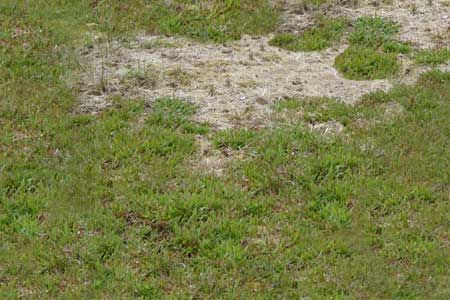Weeds aren’t the only obstacle standing between you and your dream lawn. Pests, fungal diseases, and even pets can also cause significant damage—even to established grass.
If you’ve noticed mysterious brown spots or dry patches plaguing your lawn, don’t worry. We’ll answer your questions about unique lawn problems and help you restore your yard to its former glory. In this comprehensive guide, we’ll explore eight common lawn problems, their symptoms, and effective solutions to help you maintain a healthy, vibrant lawn.
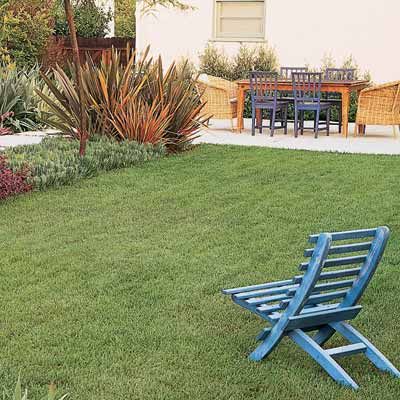
Problem: White Grubs in Your Lawn
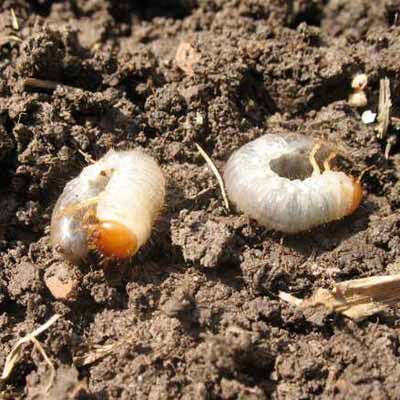
White grubs, the larvae of beetles, can wreak havoc on your lawn by feeding on grass roots.
Symptoms: Irregular dead spots caused by beetle larvae feeding on grass roots. The damage is most severe in the fall. Dead turf pulls up easily, like a rug, revealing C-shaped larvae. You may also notice animals such as armadillos, skunks, and gophers digging up your lawn to feed on the grubs.
Solution: The most effective chemical control is imidacloprid, applied in late spring to early summer. If you prefer organic methods, predatory nematodes are a useful alternative.
Prevention: Maintain a healthy lawn through proper watering, mowing, and fertilization practices, and encourage beneficial predators, such as birds, that naturally feed on grubs. Consider using pheromone traps to reduce adult beetle populations before they lay eggs.
Problem: Chinch Bugs in Your Lawn
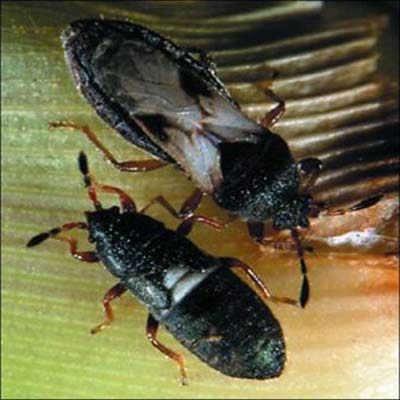
Chinch bugs are tiny insects that can cause significant damage to your lawn by sucking the sap from grass blades.
Symptoms: Irregular dry spots that turn yellow, then brown, as if drought-stressed. This damage is caused by tiny insects that suck juices from grass blades. Chinch bugs typically infest St. Augustine lawns but can also affect other grass types.
Solution: Improving lawn care practices and aerating usually helps combat chinch bug infestations. For active infestations, treat with an appropriately labeled insecticide.
Prevention: Reduce thatch buildup, avoid over-fertilizing, and maintain proper watering habits. Regular inspections during the growing season can also help catch infestations early before they cause severe damage. Consider replanting with Floratam, a resistant variety of St. Augustine grass.
Problem: Sod Webworms in Your Lawn
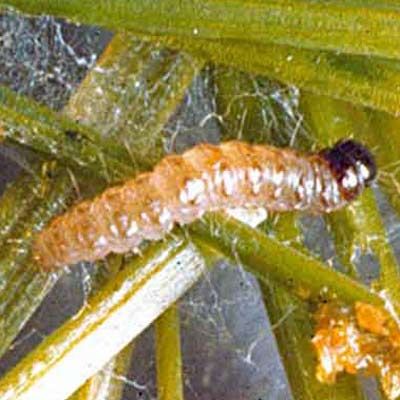
Sod webworms are caterpillars that feed on grass blades, causing brown patches in your lawn.
Symptoms: Irregular dead spots caused by small gray or tan caterpillars feeding on grass blades. You may also observe zigzagging moths at night. To confirm the presence of webworms, soak a small area with soapy water (two tablespoons of dish soap in a gallon of water). The caterpillars will surface within about 10 minutes.
Solution: Aerate the lawn to reduce thatch, which provides shelter for these pests. Treat active infestations with an appropriately labeled insecticide. For organic control, Bacillus thuringiensis (B.t.) is an effective option.
Prevention: Encourage natural predators like birds and beneficial insects to help keep sod webworm populations in check. In areas prone to webworm problems, regularly monitor for moth activity in the evenings to spot early warning signs of an infestation.
Problem: Dogs Damaging a Lawn
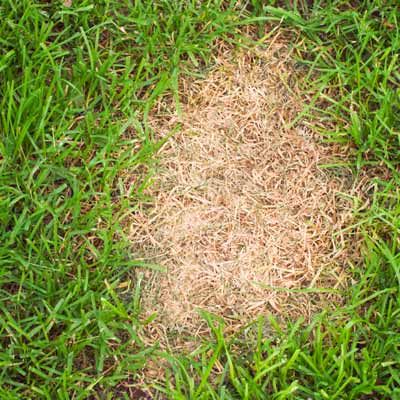
Dog urine contains high levels of nitrogen, which can burn your lawn, leading to unsightly brown spots.
Symptoms: Small dead spots usually surrounded by lush, dark green grass. This damage is typically caused by dogs urinating on the lawn.
Solutions: For existing damage, thoroughly water the affected areas to dilute the urine and promote recovery. Consider applying a soil amendment to neutralize the effects of the nitrogen in dog urine. Train pets to use specific spots in the yard or use temporary barriers to keep dogs off affected areas.
Prevention: While simple in theory, the most effective solution is to keep dogs away from the lawn. This can be challenging for dog owners, but creating designated areas for pets can help.
Problem: Lawns With Fungus Disease
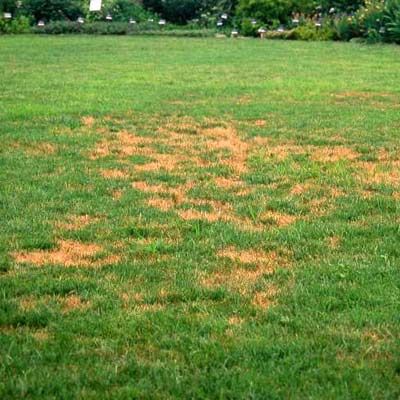
Various fungal diseases can infect your lawn and cause grass to die off rapidly.
Symptoms: Quickly appearing and expanding dead spots caused by various lawn diseases that can be difficult to diagnose without expert help.
Solution: Most lawn diseases can be managed by adjusting your watering or fertilizing schedules, improving air circulation, or reducing shade. Aerating the lawn also helps by improving soil drainage. Before using any fungicides, consult a local nurseryman or cooperative extension service for proper disease identification and treatment recommendations.
Prevention: Proper lawn maintenance is key to preventing fungal diseases. Overwatering or underwatering can both cause problems.
Problem: Striped Lawn
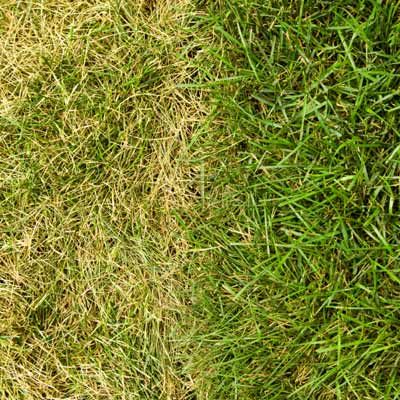
A striped lawn, while visually striking, can indicate uneven fertilizer application or improper mowing techniques.
Symptoms: Healthy, green turf alternating with yellow stripes. This pattern is typically caused by uneven fertilizer application.
Solution: When using a drop-type spreader for fertilizer application, make sure to overlap wheel tracks to ensure even coverage. If the stripes appear more tan or brown than yellow, adjust your lawn mower to cut more evenly and prevent scalping.
Prevention: Regular mower maintenance and proper technique can help prevent a striped lawn. We also recommend using a rotary spreader, which showers fertilizer in a wider path, to reduce the risk of uneven application.
Problem: Brown Areas or Dry Spots on Your Lawn
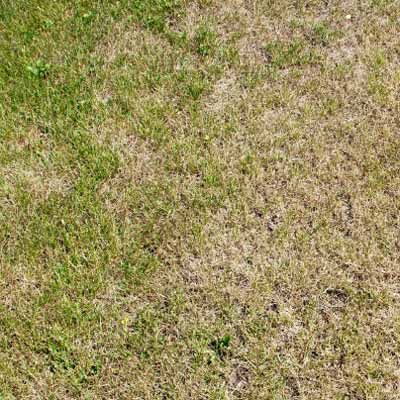
Compacted soil or faulty sprinklers can cause sections of your lawn to dry out and turn brown.
Symptoms: One part of the lawn dries out before other areas. This is often caused by compacted soil, usually due to foot traffic. Improperly adjusted, clogged, or broken sprinklers could also be to blame.
Solution: Annual lawn aeration will help water soak into compacted soil. You can also add mulch to high-traffic areas where grass struggles to grow. If you have sprinklers, observe them sprinklers while they’re running to make sure everything is working properly.
Prevention: Minimize walking or playing on the lawn, especially in concentrated areas. Install stepping stones or a pathway to reduce soil compaction in heavily trafficked areas. Periodically check your sprinklers and adjust or repair them as necessary.
Problem: Thin Grass and Moss Growing in Shade
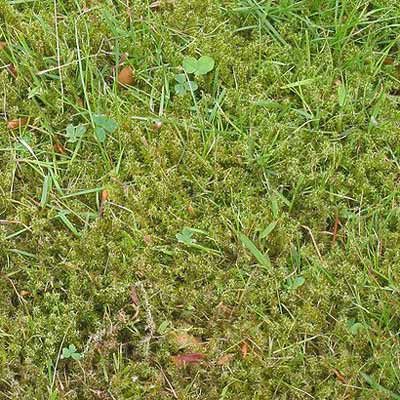
Shady areas can create challenges for grass growth, allowing moss to take over.
Symptoms: Grass grows poorly in shady areas, while moss thrives in these conditions.
Solution: Start by checking the soil pH, as moss often prefers acidic conditions. If the pH is within an acceptable range, increase sunlight by pruning overhanging tree branches. Reduce watering frequency in shaded areas and aerate to improve soil structure. Consider switching to a more shade-tolerant grass variety, such as fine fescue.
Prevention: If your lawn continues to struggle, removing the grass and replacing it with a shade-tolerant ground cover like pachysandra or vinca may be the best solution. Alternatively, you can mulch areas with persistent moss problems to create a low-maintenance landscape feature.
